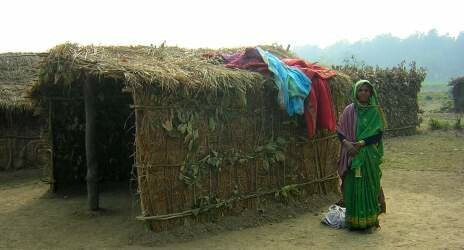
This new study forms part of a regional project initiated by the IFRC’s Disaster Law Programme and Shelter and Settlements department, and will be undertaken in cooperation with the Nepal Red Cross Society.
In the aftermath of a disaster, regulatory issues often pose a major obstacle for humanitarian organizations, hindering their efforts to meet the urgent shelter needs of disaster-stricken communities. Problems commonly encountered include dilemmas about how and where to house persons who lack documented legal title to their homes, the declaration of ‘no-build zones’ and ill-suited building codes, among others. Without the protection of emergency or longer-tem shelter solutions, the displaced face further risks to their health, safety and security.
In 2008, Nepal was hit by its worst flooding in five decades when the Koshi River erupted from its embankment and displaced close to 70,000 people, who were forced to seek refuge in temporary camps located in and around community buildings. Disasters of this scale underscore the importance of having regulatory frameworks in place to ensure effective relocation, resettlement and rehabilitation and to minimise the adverse impacts that a lack of adequate shelter and housing can have on affected communities.
As the first in-depth country case study to be conducted, the regulatory barriers project in Nepal seeks to analyse the implementation and effectiveness of existing laws and regulations relevant to the provision of emergency and transitional shelter in post-disaster contexts. Based on legal research and interviews with key stakeholders, it aims to identify and assess challenges, gaps, best practices and innovative solutions, taking into account experiences in previous disasters. Consideration will be given to both urban and rural settings, statutory and customary practices, and formal and informal land rights systems.
Key topics to be analysed are those addressed in the background paper for the 31st International Conference of the Red Cross Red Crescent, “Addressing regulatory barriers to providing emergency and transitional shelter in a rapid and equitable manner after disasters.” They include the documentation of ownership rights, opportunistic land claims, insecurity of renters or squatters, dispute resolution, biases in shelter assistance, temporary land requisition, land planning, building standards, environmental protection regulations, corruption and issues related to international shelter assistance.
The study will also serve as progress in the implementation of the resolution of the 31st International Conference addressing regulatory barriers to emergency and transitional shelter after disasters, and is timely given ongoing concerns about the imminent threat of a large-scale earthquake in the Kathmandu Valley. “Addressing regulatory barriers to shelter in Nepal is essential,” explains IFRC Shelter delegate Sanjeev Hada. “It is a topic that needs to be addressed as a priority, so that fair and simplified mechanisms are in place when delivering emergency shelter assistance in an era when natural calamities are recurrent and more catastrophic than ever before.”
In a country where one-third of urban residents live in slum dwellings, mainly in the Kathmandu Valley, and 18,000 people are squatting, there is an urgent need to protect these vulnerable communities. The development of solid legal frameworks to address these issues can help ensure the rapid and equitable provision of emergency and transitional shelter to the most vulnerable in the face of disasters.